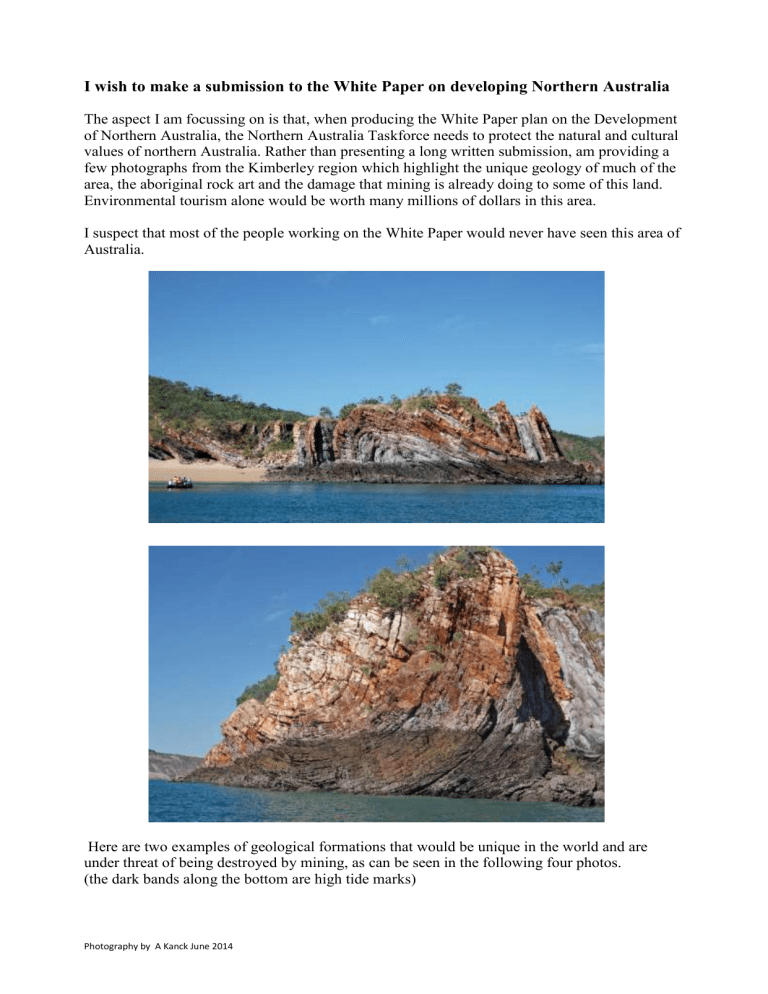DOCX: 4867 KB

I wish to make a submission to the White Paper on developing Northern Australia
The aspect I am focussing on is that, when producing the White Paper plan on the Development of Northern Australia, the Northern Australia Taskforce needs to protect the natural and cultural values of northern Australia. Rather than presenting a long written submission, am providing a few photographs from the Kimberley region which highlight the unique geology of much of the area, the aboriginal rock art and the damage that mining is already doing to some of this land.
Environmental tourism alone would be worth many millions of dollars in this area.
I suspect that most of the people working on the White Paper would never have seen this area of
Australia.
Here are two examples of geological formations that would be unique in the world and are under threat of being destroyed by mining, as can be seen in the following four photos.
(the dark bands along the bottom are high tide marks)
Photography by A Kanck June 2014
The mining process is on Koolan Island and the previous 2 photographs were taken on the other side of a bay. Near these sites were warning signs to keep out, as the land was very obviously mining company 'property'.
Here is a link to what is currently happening on Koolan Island, and plans for the next few years: www.mtgibsoniron.com.au/operations/koolan-island/
Photography by A Kanck June 2014
Here are two more examples of the amazing variability of the geology at Yampi Sound, only a 15 minute boat ride from the Koolan mine site. The upper image showing the stunning variety of geological formations all mixed together as if they had been through a cement mixer.
There are many areas with very old aboriginal rock art and also the massive King George falls (dry season photo) on the King George River, as shown below:
Photography by A Kanck June 2014
One section of King George falls, which in the dry can even be reached by cruise ships.
A mix of the very ancient and the very new rock art.
The Wandgina aboriginal people continue producing rock art amongst the rock art of their ancestors.
The amazing thing within this cave formation is the multiple layers of ripple stone, which forms ceiling layers that the current artwork is done on. The geology of the cave site is as remarkable as the ancient art work.
Photography by A Kanck June 2014











